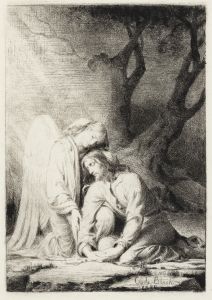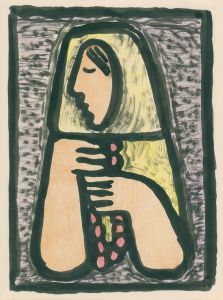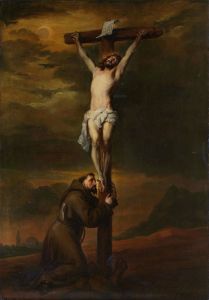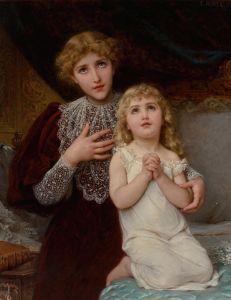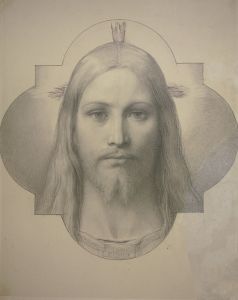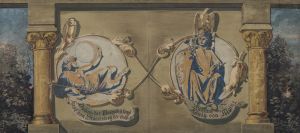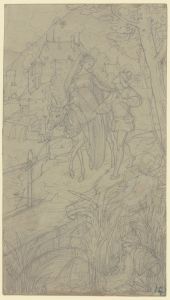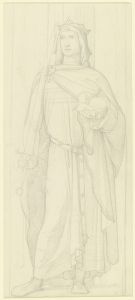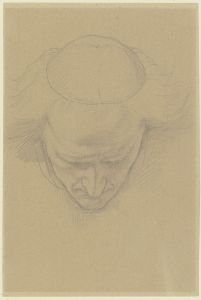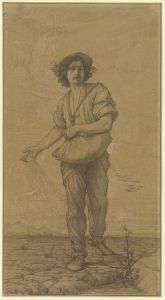
Die Heilige Scholastika in Trauer über die Trennung von ihrem Bruder, dem Heiligen Benedikt von Nursia
A hand-painted replica of Eduard von Steinle’s masterpiece Die Heilige Scholastika in Trauer über die Trennung von ihrem Bruder, dem Heiligen Benedikt von Nursia, meticulously crafted by professional artists to capture the true essence of the original. Each piece is created with museum-quality canvas and rare mineral pigments, carefully painted by experienced artists with delicate brushstrokes and rich, layered colors to perfectly recreate the texture of the original artwork. Unlike machine-printed reproductions, this hand-painted version brings the painting to life, infused with the artist’s emotions and skill in every stroke. Whether for personal collection or home decoration, it instantly elevates the artistic atmosphere of any space.
Eduard von Steinle's painting "Die Heilige Scholastika in Trauer über die Trennung von ihrem Bruder, dem Heiligen Benedikt von Nursia" is a notable work that captures a poignant moment in the lives of two significant figures in Christian history: Saint Scholastica and her brother, Saint Benedict of Nursia. Steinle, a prominent 19th-century German painter associated with the Nazarene movement, was known for his religious and historical subjects, and this painting is a testament to his skill in conveying deep emotional and spiritual themes.
Saint Scholastica and Saint Benedict were twins born in the late 5th century in Nursia, Italy. They both dedicated their lives to the service of God, with Benedict founding the Benedictine Order and Scholastica establishing a convent near Monte Cassino, where Benedict's monastery was located. The siblings were known for their close bond and shared spiritual devotion.
The painting depicts the moment of sorrow experienced by Saint Scholastica after parting from her brother. According to tradition, the siblings would meet once a year at a location near Monte Cassino to discuss spiritual matters. During their final meeting, Scholastica, sensing her impending death, asked Benedict to stay with her longer. When he refused, adhering to his monastic rule, Scholastica prayed to God, and a storm miraculously arose, preventing Benedict from leaving. They spent the night in spiritual conversation, and three days later, Scholastica passed away.
Steinle's work captures the emotional depth of this narrative, focusing on Scholastica's grief and spiritual strength. The painting is characterized by its detailed composition and use of color, typical of Steinle's style, which often emphasized clarity and a serene, devotional atmosphere. The artist's affiliation with the Nazarene movement is evident in his approach, as the movement sought to revive honesty and spirituality in Christian art, drawing inspiration from the Italian Renaissance and early Christian art.
The painting not only reflects the personal sorrow of Scholastica but also symbolizes the enduring spiritual connection between the siblings, transcending physical separation. Steinle's portrayal is both a tribute to the historical figures and an exploration of themes such as faith, devotion, and the power of prayer.
Eduard von Steinle's contributions to religious art are significant, and this painting is a fine example of his ability to blend narrative and emotion with theological themes. While specific details about the painting's current location or exhibition history may not be widely documented, its impact lies in its representation of a timeless story of faith and familial love. Through this work, Steinle continues to inspire viewers with the depth of his religious and artistic vision.





